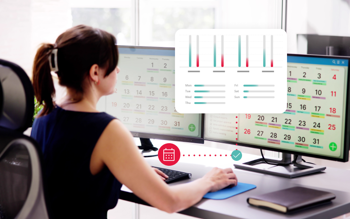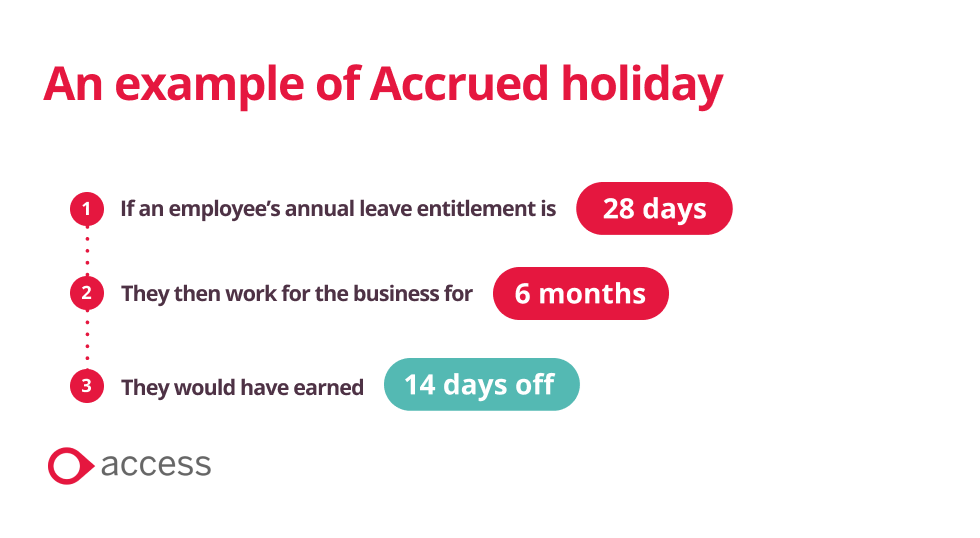
In any job role, employees will be given a certain number of days off they are entitled to use within a year. However, a company’s holiday year doesn’t necessarily need to be a standard calendar year, and can instead cover any 12-month period.
When creating your organisation’s holiday policies, there are many different questions you need to ask, such as: how many days off is an employee entitled to, can they carry over to the next holiday year, and when does the holiday year start?
In this article, we’re going to help you to decide when your holiday year should start and end, as well as sharing some top tips on how to effectively manage employee leave. You might also find it helpful to take a look at our holiday leave report, which highlights some interesting trends in how Brits take annual leave.
When does annual leave reset?
It’s up to each individual organisation to decide when their holiday year starts. This allows them to choose the most beneficial option for their business and employees. The three most common choices are January 1st, the start of the financial year (April), and the anniversary of each employee’s start date.
In most cases, the date when annual leave resets is the deadline for choosing to carry over holiday days that they haven’t yet used, if this is part of their policy.
Deciding on your holiday year
A holiday year is the 12-month period for which employees have a certain number of days off allocated to them. By law, UK businesses are required to give full-time employees at least 28 days of paid holiday leave per year, while casual workers accrue days using the rule of 12.07%.
Defining a concrete date for the holiday year to start and end allows you to:
- Ensure that employees have fair access to holiday time
- Track employee holiday entitlement and accrual
- Help to promote employee morale and productivity
Generally speaking, there are three main options for when your holiday year should start. However, there are some instances where organisations may choose a different date, such as to coincide with the academic year, or the anniversary of the business’ founding. Let’s look at the most common dates to start the holiday year, and why you might choose them.
Option 1: Calendar year
Having the holiday year start on January 1st is by far the most common choice. It’s easy for both employees and HR staff to plan annual leave throughout the year while keeping track of how many days are remaining. This is particularly important if your organisation has a ‘use it or lose it’ policy, or restrictions on how many days off can be taken at once.
Option 2: Financial year
Resetting annual leave in April is another popular option, as it means that the holiday year aligns with the financial year. This makes financial planning and reporting easier, and also allows HR professionals to spread out staff days off to avoid being understaffed during peak times. Using HR reporting software can help you to track these metrics in one place.
Option 3: Employee start date
A less common option is using the anniversary of each employee’s start date (or the date from which they begin accruing annual leave) as the start of their holiday year. This option is more complex to keep track of, but it does offer some benefits. For example, it’s a helpful way to stagger days off and avoid a rush at the end of the holiday year with lots of employees wanting to use up their entitlement.
What is accrued holiday? Does it impact the holiday year?
Accrued holiday is the amount of annual leave an employee has earned on a pro-rata basis. This prevents workers from taking off more time than is fair. For example, if an employee’s annual leave entitlement is 28 days and they have worked for the business for six months, they would have earned 14 days off. Should an employee use more days off than they have accrued, they may be required to pay back the wages earned for any excess holiday days.
Holiday entitlement is earned in line with an employee’s length of service, so the way your HR department calculates accrued time off will depend on when your company’s annual leave resets. Whether you choose to start the holiday year from January 1st, the start of the financial year, or from each employee’s start date, you will need to factor this in when calculating how many days off each employee has accrued.
Different employers have their own rules for how annual leave works within their organisation, such as restricting holiday during peak times, not allowing unused days to carry over to the next holiday year, or giving employees the option to purchase additional days off. These are further considerations that you’ll need to make when designing your holiday policy. Remember as well that the way holiday entitlement is calculated for casual workers is different than for full-time employees.

How to effectively manage employee holiday leave
So, when does annual leave reset? The short answer is: Whenever you want it to. However, most businesses choose January 1st, the start of the financial year, or each employee’s start date as the beginning of the holiday year. There’s no right or wrong answer, so it’s important to weigh up the considerations we’ve discussed above to decide which one is right for your company.
Regardless of the size of your business, managing staff leave effectively requires a lot of work, and getting it wrong could mean that you end up short staffed during a busy period, or that you fail to meet your legal obligations in providing adequate time off for your employees. Implementing absence management software can help you to keep track of all your annual leave requirements in one place, making it easier to calculate accrued time off, analyse patterns of absence, and ensure that your compliance needs are met.
Take advantage of a free trial of PeopleHR’s time-saving HR software and see how it can help you to manage annual leave for your business.
